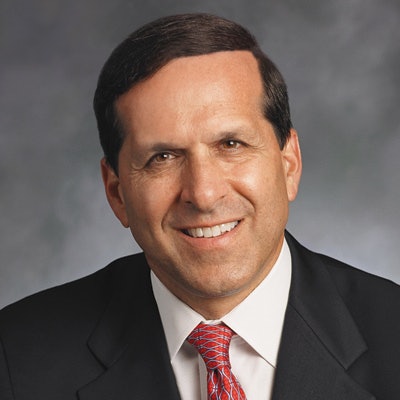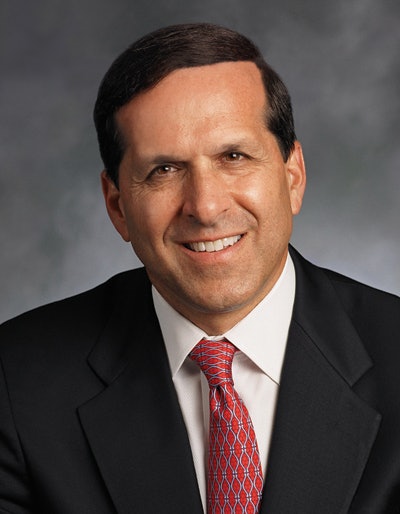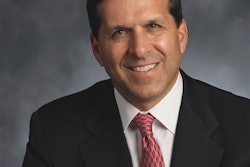
The single most important factor in the success of dental practices is establishing excellent business systems. Systems include major functional areas such as scheduling, hygiene productivity, case presentation, insurance management, and patient finance. There are great opportunities to increase practice efficiency within each of these systems.
As systems are built, it's also important to keep in mind the effect that each system has on practice production. As practices and systems continue to develop and evolve, it's often necessary to retrofit new specific productivity actions into the existing practice systems to maintain ongoing success.
One of the most important business practices is to do the most productive things first. This article will lay out four specific actions that a practice can take to increase production rapidly.
1. Reactivate all active and inactive patients
 Dr. Roger P. Levin.
Dr. Roger P. Levin.It's conceivable that the single most powerful factor in increasing practice production today is reactivation of patients. If a practice has 2,000 patients and even 10% have not yet returned to the practice due to safety or financial concerns, that represents the equivalent of 200 active patients. These are patients who were active, kept regular hygiene appointments, and contributed to the production of the practice.
Keep in mind that there is an additional large group of patients who are simply overdue for appointments. Either they did not make their next appointment prior to leaving the office, they canceled an appointment, or they were a no-show and have not rescheduled. This could easily add another 10% or more in most practices.
You should contact overdue patients on a regular basis. Make it a daily activity with clearly defined scripting to let patients know that the practice is safe and offers varying financial options. We have experienced a great deal of effectiveness using this strategy in scheduling patients who are currently overdue for their appointments.
A follow-up method that Levin Group recommends is to pursue each patient over a nine-week period. In those nine weeks, the practice can make contact with three calls, three texts, and three emails at the rate of one per week. By following this protocol, patients (who are often busy in their own lives) will recognize they are overdue for dental appointments and will get back on track to maintain optimal oral health.
While this approach may sound like overkill, the average response time of a patient is approximately four weeks. If the patient doesn't respond after three calls, three text messages, and three emails, then the patient should be placed on a cycle of communication every 90 days going forward.
2. Identify all incomplete treatment
A second outreach approach by the practice is to identify all patients who haven't completed treatment and contact them in an attempt to get them scheduled. Again, scripting is a major factor in the success of scheduling patients with incomplete treatment.
Practices can call patients and let them know that the practice was reviewing records and discovered they had not completed treatment. You should then encourage each patient to schedule an appointment. This is a highly effective approach that will have many patients pleased that the practice reached out to them as a follow-up to complete treatment.
The first step is to identify all patients who have outstanding treatment. The second step is to determine whether they have remaining insurance benefits. If the patient has remaining insurance benefits to use against the outstanding treatment, then the scripting should include this information. When patients understand that they will lose certain benefits if they are not used by year's end, it will motivate them to finish treatment.
If the patient doesn't have insurance benefits, scripting should focus on why it is important to complete the outstanding treatment. Practices should always focus on providing high-quality care and achieving optimal oral health for each patient. If a patient decides not to schedule, then a flag should be placed on the patient's record so that it can be addressed in the next hygiene visit.
3. Identify outstanding treatment in the daily business meeting
Every practice should have a daily business meeting or what is commonly referred to as the morning meeting. The morning meeting should always begin with something inspirational or interesting as the kickoff for everyone to recognize that it's time to become mentally prepared for a positive day.
The meeting should then focus on reviewing any outstanding treatment. This will help hygienists be prepared and ready to point this out to the patients they are scheduled to see that day. During the doctor exam, the benefits of treatment can be reinforced again, and the patient should be encouraged to schedule.
Levin Group recommends that patients be introduced to the consequences of not going forward with treatment. Introducing patients to consequences can be a powerful way to motivate people to follow through with treatment.
4. Block the schedule to achieve daily production goals
This may sound like an old idea, but it's still extremely powerful. Most practices utilize some type of time blocking for the schedule, but it isn't used consistently, and the main approach is simply filling in holes in the schedule. However, in this case we are referring to blocking the schedule to ensure the daily production goals can be achieved.
Practices with goals always perform better. In Levin Group's 30-year ongoing study of top 10% performing practices, we have consistently found that they operate by two sets of goals. The first set is part of the vision for the future of the practice and the second set is part of daily operations with a daily production goal being an essential element.
When practices consistently miss daily production goals, it's time to step back and begin to block the schedule accordingly to ensure that production numbers are hit. Think about it. To meet the goal of increasing practice production, the schedule must be one of the first systems that is addressed. By placing blocks in the schedule to ensure the daily goal is met, practices have a much better chance of performing at a higher level.
There are many approaches to increasing practice production, and the four outlined in this article will not only increase practice production but increase it quickly.
Dr. Roger P. Levin is CEO of Levin Group, a leading practice management and marketing consulting firm. To contact him or to join the 40,000 dental professionals who receive his Practice Production Tip of the Day, visit LevinGroup.com or email [email protected].
The comments and observations expressed herein do not necessarily reflect the opinions of DrBicuspid.com, nor should they be construed as an endorsement or admonishment of any particular idea, vendor, or organization.


















